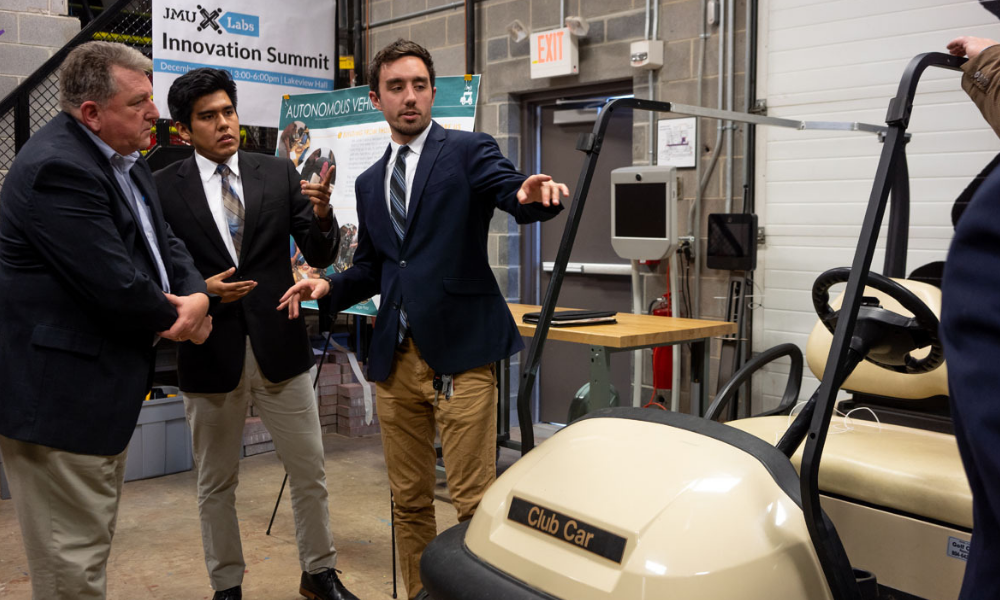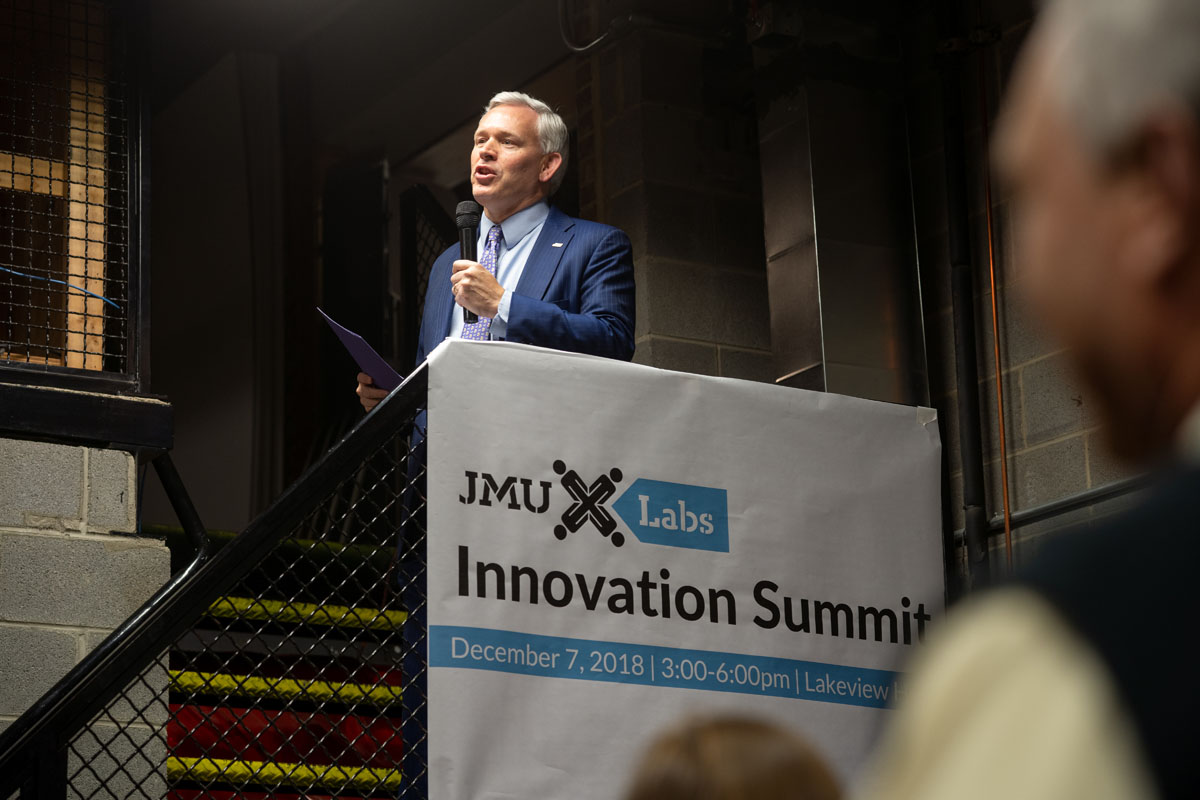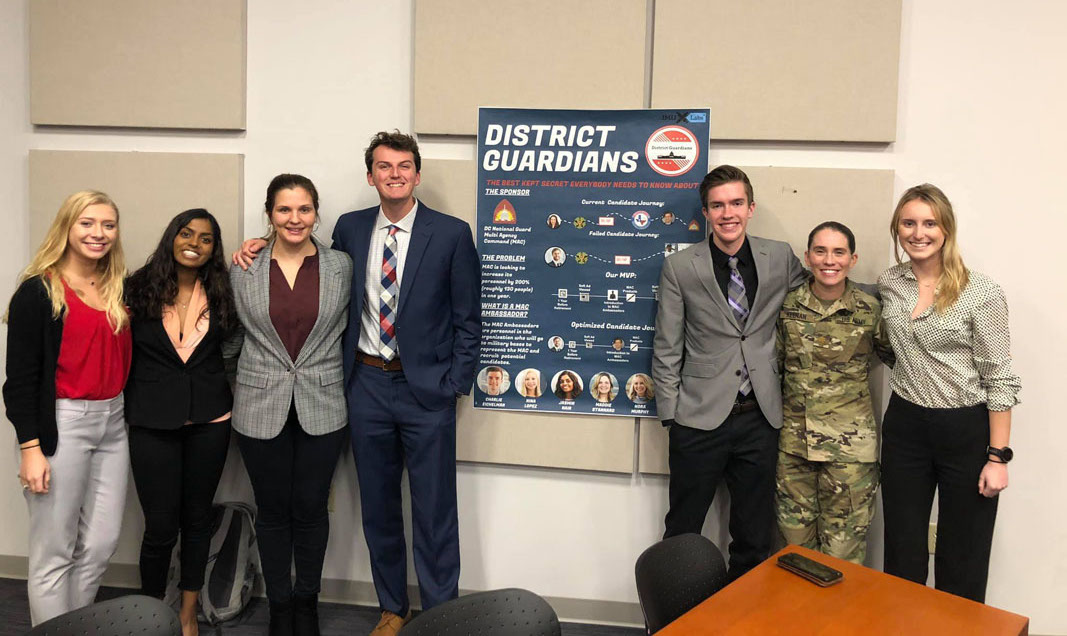JMU X-Labs – Bridging the gap between curriculum and industry
News
SUMMARY: With its transdisciplinary courses, the JMU X-Labs model of education uses design thinking and Lean startup to foster those skills by challenging students to investigate every aspect of a problem, iterate ideas, welcome meaningful failure to solve those problems, and collaborate with industry professionals and peers from different majors.
At a time when higher education is trying to keep pace with the rapidly changing needs in industry, it is increasingly important to provide students with skills that go beyond traditional expectations. With its transdisciplinary courses, the JMU X-Labs model of education uses design thinking and Lean startup to foster those skills by challenging students to investigate every aspect of a problem, iterate ideas, welcome meaningful failure to solve those problems, and collaborate with industry professionals and peers from different majors.
In 2015, JMU X-Labs opened its doors with classes like Medical Innovations—where cross-disciplinary student teams work on global health issues like the opioid crisis, and Drones—where teams solve problems ranging from safe landmine detection to preserving UNESCO World Heritage sites and restoring oyster reefs.
In just three years JMU X-Labs has expanded its course offerings to eight or more academic classes per semester. The culminating showcase at the end of each semester is called the JMU X-Labs Innovation Summit, where students from all of the classes exhibit and present their solutions. On December 7, 2018, JMU X-Labs hosted its second Innovation Summit, featuring the projects of more than 100 students from 28 different majors across campus from the following courses:
- Augmented/Virtual Reality
- Autonomous Vehicles
- Blockchain
- Creativity and Innovation
- Community Innovations
- Hacking for Diplomacy
- Internet of Things
- Medical Innovations

President Alger attended the event and engaged with the faculty and students to learn about projects such as the augmented reality app that students made to revolutionize how molecules are visualized and taught in introductory chemistry classes. “These classes really demonstrate what 21th-century learning is all about,” he said during his welcome address, “We’re very proud of what you all are doing. Let’s keep this going and grow these efforts across the university.”
Provost Coltman also spoke at the event, emphasizing that “[t]his program allows students to think outside the box in a very creative and exciting space. It takes people who are willing to be humble, to take calculated risks … that can have the power to change lives.”
One group of people whose lives may be changed is the Bridgewater Retirement Community. At their request, the Autonomous Vehicles class started developing a self-driving kit that can be installed on any golf cart to make it run autonomously. The project could lead to a viable, marketable product for others down the road as well. During his team’s presentation, Alex Gellios, an engineering student (‘19) who worked on the project explained, “There are roadblocks, but everything is feasible with the knowledge we’ve gained. Hopefully next semester, they’ll able to finish what we started.”

The District of Columbia (D.C.) National Guard also benefited from partnering with the JMU X-Labs program. A student team from the Hacking for Diplomacy class collaborated with Major Laura Keenan to connect active duty service members who want to continue serving their country after retirement with ambassadors of the D.C. National Guard to help them make an informed decision about the program. After 65 interviews with experts in the field and weekly meetings, the students developed a recruiting program to increase the number of positive matches so that the right candidates can find and seamlessly transition into the program.
